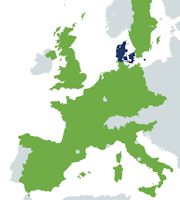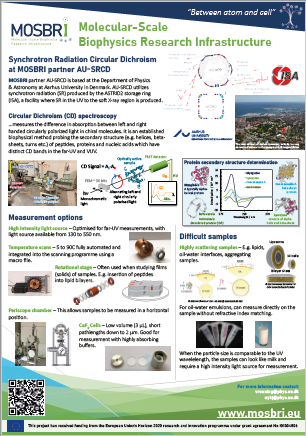2) AU-SRCD – SRCD Facility at ASTRID2, Aarhus University
Location: Aarhus, Denmark
Web-site(s):
MOSBRI reference site for the following techniques:
CD: Circular dichroism
Practical information:
MOSBRI at ISA, Accommodation, Travel to Aarhus, Travel within Aarhus, User information


Partner description
The ASTRID2 storage ring, at the Department of Physics & Astronomy, Aarhus University, Denmark, is a facility where synchrotron radiation (SR) in the UV to the soft X-ray region is produced. Access under MOSBRI is offered to advanced Circular Dichroism (CD) beam lines on ASTRID2. Synchrotron Radiation Circular Dichroism (SRCD) spectroscopy offers significant improvements to the well-established method of conventional CD (cCD) spectroscopy. The high photon flux, over a wide range of wavelengths, results in higher signal-to-noise ratios and enables the collection of data at lower wavelengths than possible with cCD spectrometers. SRCD facilities are rare, with only eight either in operation or planned worldwide. The AU-SRCD beam line, recognised as world-leading, routinely offers access to European and Worldwide users.
As a special feature, using SRCD it is also possible to measure difficult samples like e.g. scattering samples of proteins/peptides in lipids or detergents, which is otherwise very difficult or impossible on conventional CD spectrometers. Should you be interested in an expanded investigation on such difficult proteins samples, then FTIR, as offered by the MOSBRI partner ULB, is an attractive complementary technique. MOSBRI offers access to both AU-SRCD and ULB as a single transnational access proposal.
Instruments / methodologies offered through TNA
- SRCD: High quality CD measurement of liquid or dry-film samples, in a temperature controlled system allowing thermal stability studies.
- SRLD: A Couette flow linear dichroism (LD) instrument, inducing alignment of long molecules, such as DNA, through the flow of a solution, provides information on the orientation of chromophores of an orientable molecule and of small ligands which may be bound to it.
- Stopped flow CD measurements: Utilising a small focused beam from the high intensity undulator source on the AU-AMOLine, we also offer access to a unique instrument, rapid-SRCD (rSRCD). Measurements on the millisecond timescale allow the kinetics of rapid secondary structure folding phenomena to be investigated
Access modality: Physical access is allocated as either 2½ or 4 days. Remote access to this facility is provided to industrial users.
Sample requirements
SRCD: Our standard cell for SRCD measurement has a 0.1 mm pathlength and requires about 30 uL loading volume with a typical protein concentration of about 1 mg/ml. The use of salts and buffer containing Cl- ions should be avoided or minimized, as they hinder low wavelength measurements. The optimum buffer is a phosphate buffer, pH adjusted using a mixture of the mono and divalent Na+ forms, with ionic strength adjusted using NaF instead of NaCl. For higher concentration samples, we have shorter pathlength cells readily available. For temperature melts, where the CD spectrum is measured at a range of temperatures, we normally use the 0.1 mm cell with a loading volume of 75-100 uL.
SRLD: The couette flow cell has a pathlength of 0.5 mm and requires a fill volume of 50 uL. The conditions for SRCD required to avoid highly absorbing buffers/salts also apply.
Stopped flow CD measurements: The cell pathlength for these measurements is 2 mm, with a typical starting protein concentration of 0.1 mg/ml required. As multiple shots are required for accurate measurement, ~2 mL of sample is required for a single experiment. The conditions for SRCD required to avoid highly absorbing buffers/salts also apply.

